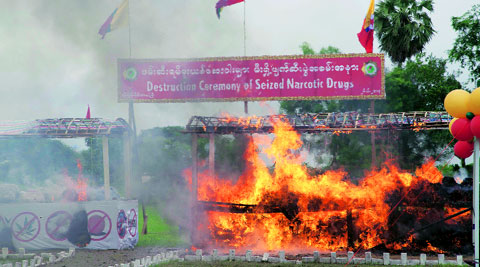Agartala, Sep 1 : More than 30,000 displaced Reang/Bru tribal people from neighbouring Mizoram, sheltered in seven camps in North Tripura district, have demanded a status like Kashmiri Pandits or Tamil refugees.
The Mizo Bru Displaced People’s Forum (MBDPF), the only organisation of the inmates, submitted a 13-point charter of demands including the status like Kashmiri Pandits or Tamil refugees to a Ministry of Home Affairs (MHA) delegation led by its Additional Secretary Rajib Gauba when it visited the camps, MBDPF general secretary Bruno Mesa said.
Mesa said the inmates were living in “inhuman” conditions for the past 17 years since they trickled into the camps following ethnic clashes with the Mizos. “There is no school for the children. Though a few schools were being run by some NGOs, they closed down due to funds crunch. There is hardly any healthcare provision for the inmates. Infant mortality is high because there is no vaccine or nutrition for them,” Mesa alleged.
He said, since repatriation would not be possible soon, the living condition of the camp inmates should be improved and they should be given proper healthcare and opportunity for education.
For a permanent solution, the Bru people should be repatriated in their homeland in Mizoram with adequate land, compensation and proper security, Mesa said.
There are 30,289 people in the seven evacuee camps. The MHA team would submit its report to the Ministry by September 12.
The Mizo Bru Displaced People’s Forum (MBDPF), the only organisation of the inmates, submitted a 13-point charter of demands including the status like Kashmiri Pandits or Tamil refugees to a Ministry of Home Affairs (MHA) delegation led by its Additional Secretary Rajib Gauba when it visited the camps, MBDPF general secretary Bruno Mesa said.
Mesa said the inmates were living in “inhuman” conditions for the past 17 years since they trickled into the camps following ethnic clashes with the Mizos. “There is no school for the children. Though a few schools were being run by some NGOs, they closed down due to funds crunch. There is hardly any healthcare provision for the inmates. Infant mortality is high because there is no vaccine or nutrition for them,” Mesa alleged.
He said, since repatriation would not be possible soon, the living condition of the camp inmates should be improved and they should be given proper healthcare and opportunity for education.
For a permanent solution, the Bru people should be repatriated in their homeland in Mizoram with adequate land, compensation and proper security, Mesa said.
There are 30,289 people in the seven evacuee camps. The MHA team would submit its report to the Ministry by September 12.
















